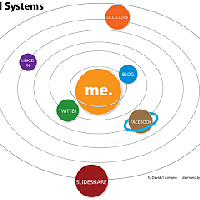Home
About Us
Page 2
Unlike other federal loans though, the Federal Perkins Loan is made available to the student through the financial aid office of their institution. This means that rather than borrowing from the government or a commercial lender, the student is lending from the school and the loan is made with government funds. While it was made with government funds, the student still pays back the school. Schools can provide the students the money by issuing a cash or check or applying the sum directly to the student account at the school.
|
|
To be eligible for the Federal Perkins Loan Program the student is required to be a United States citizen or an eligible non-citizen (this means those with an Alien Registration Card or those with a Arrival Departure Record with specific designations). The student must also be accepted for enrollment into an eligible institution of higher education.
Depending on the need of the student and how much they are assigned designated by the institution, a Federal Perkins Loan limit is at $4,000 for undergraduate students that are attending the institution and $6,000 for graduate students. This is set, unless reasonable study abroad costs exceed the cost of attendance at the home institution, at that point the student can receive up to 20% more to pay for the extra cost that may be encountered in that particular situation.
As long as the student maintains half-time status they have nine months after the date that they either graduate, drop below half-time student status or leave school before they need to start thinking about the repayment of their student loans. This period that the student gets before having to start paying back their loan is called the grace period. Students may be allowed up to 10 years to repay their Federal Perkins Loan.
Financing Your Education - Federal Perkins Loans
Back to Page 1
About The Author The author edits a site featuring Educational Grants and another Government Grants site providing info on every grant the federal government offers. Michael Saunders has an MBA from the Stanford Graduate School of Business. |
Additional Resources
category - Education Grants
Education Grants for High Achieving Students
SMART Grants - Educational Grants for the Student of Math, Science and Languages
Education Grants for Students Interested in Teaching Careers
Teacher - Learn How To Write The Best Resume You Can
Follow @topgovtgrant
Social Entrepreneurship
Spotlight
Social Enterprise Version 2.0

Midsize businesses are tapping into the social business market because large companies do not need the help of start-ups to create a “social technology stack.” But a social business stack cannot generate revenue by itself.
